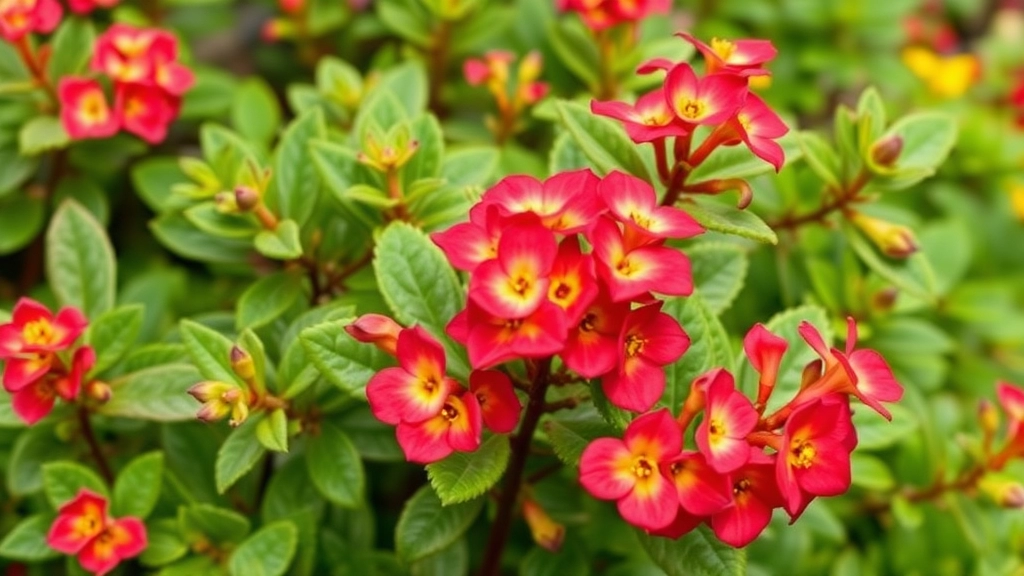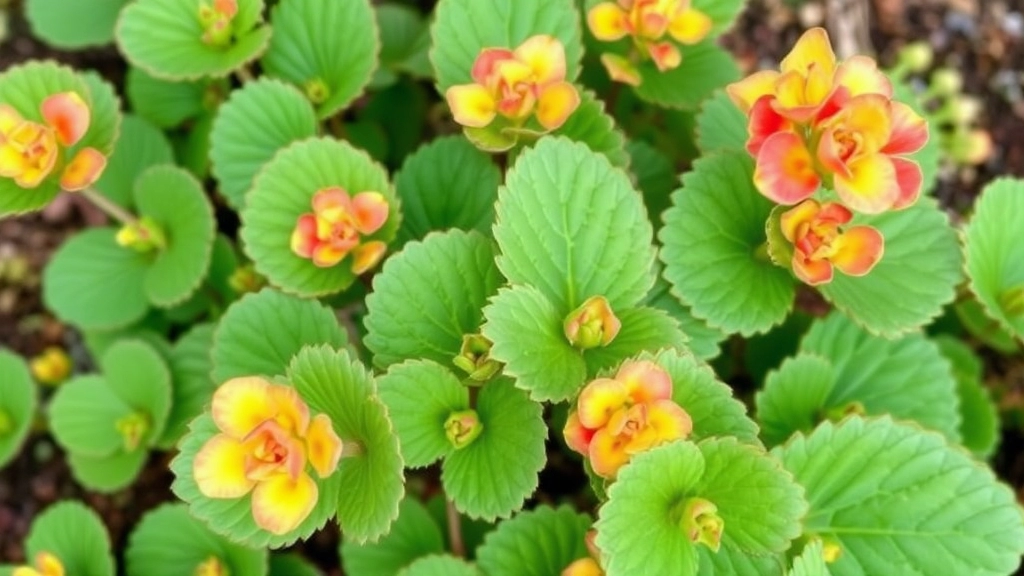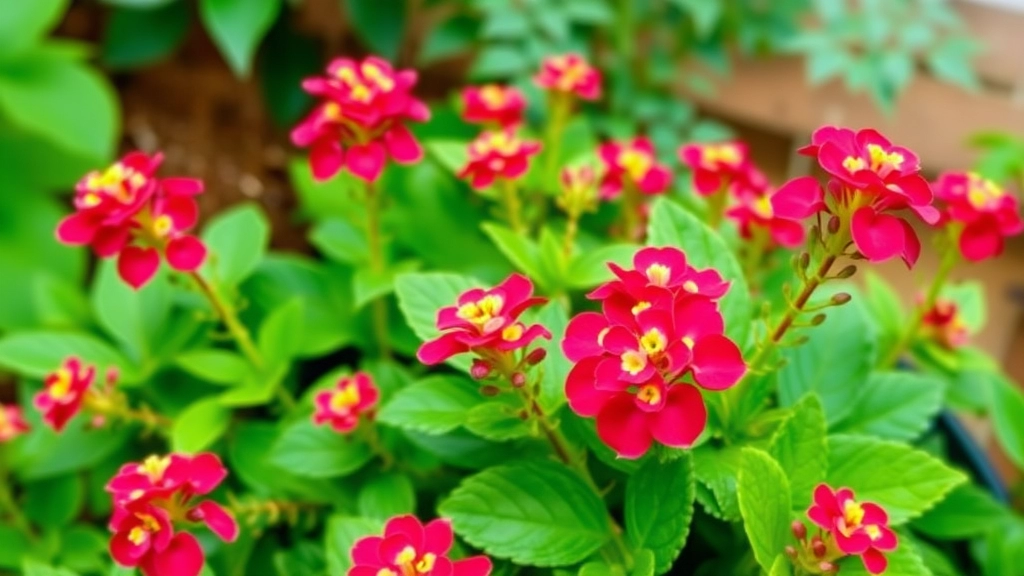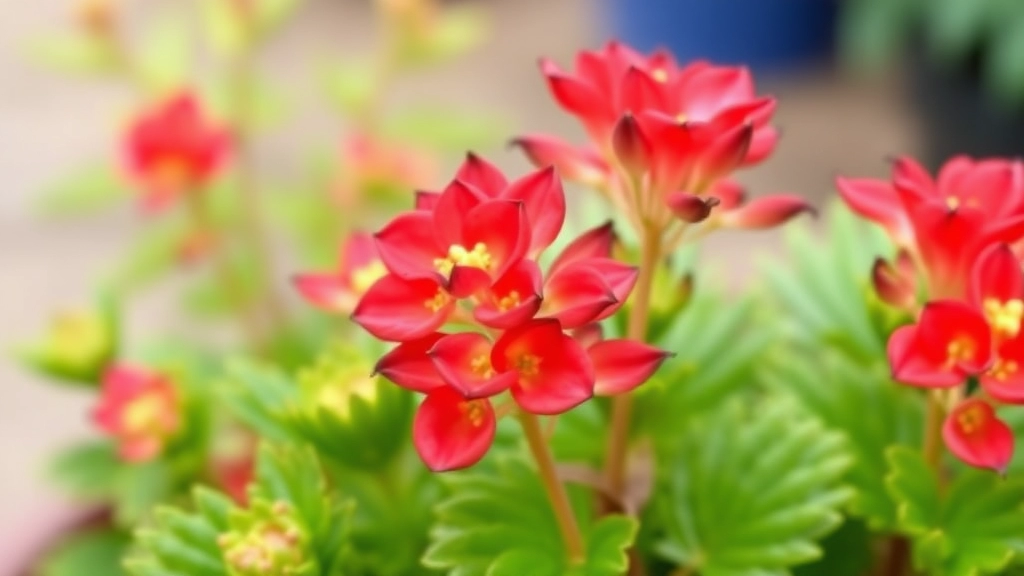Will Deer Eat Kalanchoe Plants?
Wondering if deer will eat Kalanchoe plants? You’re not alone. Many gardeners are concerned about protecting their beloved succulents from these hungry herbivores. While Kalanchoe is generally considered deer-resistant, there are instances when deer might still nibble on them, especially if food is scarce.
Factors Influencing Deer Behavior
Factors like the plant’s texture, scent, and availability of other food sources play a significant role in whether deer will target Kalanchoe. To keep your plants safe, it’s crucial to understand these factors and implement effective protective measures.
What to Expect in This Article
In this article, we’ll explore:
- Why Kalanchoe is less appealing to deer
- Signs of deer damage
- The best strategies to safeguard your plants
Are Kalanchoe Plants Deer-Resistant?
If you’re a gardener worried about deer munching on your prized plants, you might be wondering: Are Kalanchoe plants deer-resistant?
The short answer is yes, Kalanchoe plants are generally considered to be deer-resistant.
However, this doesn’t mean they are entirely safe from deer.
- Toxicity: Kalanchoe contains compounds that are toxic to many animals, including deer. This can make them less appealing as a food source.
- Texture: The thick, fleshy leaves of Kalanchoe can be unappealing for deer, who often prefer softer foliage.
- Odour: Some varieties emit a scent that deters deer, making them think twice before approaching.
That said, there are circumstances where deer might still nibble on Kalanchoe. For more details on how to deter deer, you can check out our guide on understanding deer resistance in Kalanchoe. Additionally, if you’re curious about the different varieties that might be more resistant, our Kalanchoe tomentosa varieties guide can offer some insights.
Factors That Make Kalanchoe Less Appealing to Deer

So, you’re worried about whether deer will munch on your beautiful Kalanchoe plants? You’re not alone! Many gardeners share this concern.
Here’s the good news: Kalanchoe plants have a few traits that make them less appealing to our four-legged friends.
Tough Texture
- Fleshy Leaves: Kalanchoe has thick, fleshy leaves that can be unappealing to deer. They prefer softer, more palatable plants.
Bitter Taste
- Naturally Bitter: The leaves of Kalanchoe contain compounds that can taste bitter. This bitterness often deters deer from taking a bite.
Low Nutritional Value
- Not a Nutritional Powerhouse: Deer are on the lookout for high-nutrient snacks. Kalanchoe doesn’t fit the bill, making it a less desirable option.
Seasonal Considerations
- Seasonal Preferences: During spring and summer, deer may have plenty of other food options. Kalanchoe might not even be on their radar.
Scent
- Distinctive Smell: Some Kalanchoe varieties emit a scent that deer find unappealing. This can act as a natural deterrent.
Understanding when deer might choose to nibble on Kalanchoe is crucial for gardeners looking to protect their plants.
Deer are generally selective eaters and prefer certain types of vegetation over others. However, they can sometimes turn to Kalanchoe, especially under specific circumstances:
– **Food Scarcity:** During late winter or early spring, when food is scarce, deer may resort to eating Kalanchoe out of desperation.
– **Young Growth:** Newly planted or tender Kalanchoe leaves can be particularly appealing to deer, as they are softer and more palatable compared to mature leaves.
– **Stress Conditions:** If deer are stressed due to habitat loss or overpopulation, they may venture into gardens and consume plants they typically avoid.
– **Seasonal Changes:** In the fall and winter, when other food sources are less available, deer may be more inclined to sample Kalanchoe.
To reduce the chances of deer munching on your Kalanchoe, it’s essential to understand these conditions. For more tips on maintaining your plants, check out this [guide on outdoor Kalanchoe care](https://planthq.org/outdoor-kalanchoe-care-expert-tips-and-best-practices/) and learn how to [fix overgrown or leggy Kalanchoe](https://planthq.org/fix-overgrown-leggy-kalanchoe-pruning-and-care-tips/).
Signs of Deer Damage on Kalanchoe Plants

Understanding how to identify deer damage on Kalanchoe plants is crucial for any gardener concerned about their greenery.
Have you ever noticed unusual changes in your Kalanchoe?
Here are some key signs that deer may be munching on your plants:
- Missing Leaves: One of the most obvious signs is the absence of leaves. If your Kalanchoe seems to have fewer leaves than usual, it might be a target of deer.
- Jagged Edges: Deer tend to take bites out of leaves, leaving behind jagged or torn edges. This can indicate that they’ve been snacking on your plants.
- Uneven Growth: If some parts of your Kalanchoe appear stunted or uneven, it could be a sign that deer have been nibbling on them, disrupting their growth.
- Footprints: Look for deer tracks around your garden. These may indicate that deer have ventured close to your Kalanchoe.
- Droppings: Finding deer droppings nearby is another clear sign that these animals have been in the vicinity of your plants.
Identifying these signs early can help you take action to protect your Kalanchoe.
How to Protect Kalanchoe from Deer Damage
As we explore ways to safeguard Kalanchoe plants from deer, it’s essential to understand that while these plants are generally deer-resistant, they are not entirely immune.
1. Physical Barriers
One of the most effective methods is to create physical barriers. Consider the following options:
- Fencing: Install a fence that is at least 6 feet high. Deer are excellent jumpers, so height is critical.
- Netting: Use garden netting around your Kalanchoe to keep deer at bay without obstructing sunlight.
- Row Covers: These can protect young plants and are easily removable.
2. Deer-Repellent Sprays
Utilising commercial deer repellents can be beneficial. Look for products containing:
- Putrescent egg solids: These emit an unpleasant odour to deer.
- Capsaicin: Derived from hot peppers, this ingredient can deter deer with its spicy scent.
- Essential oils: Oils like peppermint or garlic can also work effectively.
3. Scent Deterrents
Deer rely heavily on their sense of smell. To exploit this, consider:
- Human hair: Scatter some around your garden. The human scent can deter deer.
- Soap bars: Hanging bars of soap, especially those with strong scents, can be a simple deterrent.
4. Strategic Planting
Incorporating companion plants can further protect your Kalanchoe. Planting:
- Strong-smelling herbs: Such as mint or lavender can create an unfavourable environment for deer.
- Thorny plants: These can act as a natural barrier.
5. Regular Monitoring
Keeping an eye on your garden is crucial. Look for:
- Signs of deer activity, such as tracks or droppings.
- Any nibbling on nearby plants, which may indicate that deer are nearby.
Best Deer-Repellent Methods for Kalanchoe

So, you’ve got your Kalanchoe plants, and you’re wondering how to keep those pesky deer at bay.
Deer can be a real headache when it comes to gardening, but don’t worry, there are some effective methods you can use to protect your beloved plants.
Here are some of the best deer-repellent strategies for Kalanchoe:
- Strong Scents: Deer are not fans of strong smells. You can use things like garlic, cayenne pepper, or even commercial deer repellents. Spraying a mixture of water and these ingredients on your plants can deter them.
- Physical Barriers: Fencing is a classic solution. A fence that’s at least 8 feet high usually does the trick. If that’s too much, consider using netting or row covers to shield your Kalanchoe.
- Motion-Activated Sprinklers: These gadgets can give deer a fright! When they approach your garden, the sudden burst of water will send them running.
- Planting Companions: Certain plants, like lavender or sage, can repel deer. Mixing these in with your Kalanchoe can create a natural barrier.
- Human Hair or Pet Fur: Spreading some human hair or fur from your pets around your garden can make deer think there’s a predator nearby, keeping them at a distance.
- Regular Maintenance: Keeping your garden tidy can help too. Deer are more likely to munch on plants in overgrown areas, so regular trimming and cleaning can make your Kalanchoe less appealing.
By employing these methods, you can create a less inviting environment for deer while ensuring your Kalanchoe thrives.
As we explore ways to protect Kalanchoe plants from deer, companion planting emerges as a strategic option worth considering.
Companion planting involves strategically placing certain plants together to enhance growth and deter pests, including deer. By choosing the right companions for your Kalanchoe, you can create an environment that is less appealing to these foragers.
Here are some effective companion plants to deter deer:
– **Lavender**: The strong scent of lavender is known to repel deer while attracting beneficial pollinators.
– **Rosemary**: This aromatic herb not only complements your Kalanchoe aesthetically but also acts as a natural deer deterrent.
– **Sage**: Similar to rosemary, sage has a robust fragrance that deer typically avoid.
– **Thyme**: This low-growing herb can be planted around Kalanchoe to create a fragrant barrier.
– **Marigolds**: Their vibrant blooms and strong scent can help mask the smell of Kalanchoe, making them less noticeable to deer.
Incorporating these plants into your garden can create a natural repellent effect, safeguarding your Kalanchoe from potential nibbling.
Moreover, the combination of these plants can enhance the overall health of your garden. They can attract beneficial insects, improve soil health, and provide a natural habitat for wildlife. For more specific tips on keeping your Kalanchoe healthy, you might find our [complete care guide for Kalanchoe Blossfeldiana](https://planthq.org/complete-care-guide-for-kalanchoe-blossfeldiana-succulent/) helpful. Additionally, if you’re dealing with issues like drooping leaves, our guide on [fixing drooping Kalanchoe leaves](https://planthq.org/how-to-fix-drooping-kalanchoe-leaves-causes-and-solutions/) offers practical solutions.
Now that we’ve explored how Kalanchoe can be a less appealing snack for deer, let’s dive into the plants that they absolutely love to munch on.
If you’re worried about deer raiding your garden, knowing which plants they prefer can help you make smarter choices.
Here are some common alternatives that deer tend to favour over Kalanchoe:
– **Hostas**: These leafy beauties are like candy to deer. Their lush foliage is irresistible.
– **Tulips**: Bright and cheerful, but deer see them as a delicious treat.
– **Roses**: While they may have thorns, deer often overlook the prickles for the sweet scent and taste.
– **Daylilies**: These vibrant flowers are another favourite for deer, making them a risky choice in deer-prone areas.
– **Cabbage and Kale**: Edible plants like these are often a buffet for hungry deer.
– **Zinnias**: Their bright colours attract not just gardeners but also deer looking for a snack.
– **Petunias**: These vibrant blooms are eye-catching but are also on the menu for deer.
– **Impatiens**: These shade-loving plants are sweet treats for deer, especially in summer.
If you’re planting a garden and want to keep it safe from deer, it’s wise to steer clear of these options. For more information on how to care for Kalanchoe, check out our [ultimate guide to flowering Kalanchoe care tips for blooming](https://planthq.org/ultimate-guide-to-flowering-kalanchoe-care-tips-for-blooming/). Additionally, if you’re curious about the different varieties of Kalanchoe, you might find our [top flowering Kalanchoe species and care tips](https://planthq.org/top-flowering-kalanchoe-species-and-care-tips/) helpful.
FAQs about Deer and Kalanchoe Plants
Will deer eat Kalanchoe plants?
Generally, deer tend to avoid Kalanchoe plants due to their tough texture, bitter taste, low nutritional value, and distinctive scent. However, in times of food scarcity, deer might still nibble on them.
What makes Kalanchoe less appealing to deer?
Kalanchoe plants have thick, fleshy leaves, a naturally bitter taste, low nutritional content, and sometimes emit a scent that deer find unappealing. These factors collectively make Kalanchoe less desirable to deer.
How can I identify deer damage on my Kalanchoe plants?
Signs of deer damage include missing leaves, jagged or torn leaf edges, uneven growth, deer footprints, and droppings near the plants. Spotting these signs early can help you take protective measures.
What are the best methods to repel deer from my Kalanchoe plants?
Effective deer-repellent strategies include using strong scents like garlic or cayenne pepper, installing physical barriers such as fencing or netting, employing motion-activated sprinklers, planting deer-repellent companion plants like lavender, spreading human hair or pet fur, and maintaining a tidy garden.
Do seasonal changes affect deer interest in Kalanchoe?
Yes, during spring and summer, deer have more food options available and are less likely to target Kalanchoe plants. However, in fall and winter, when food is scarce, they might be more inclined to nibble on these plants.
Can I use commercial deer repellents on Kalanchoe plants?
Yes, commercial deer repellents can be effective. These products usually contain strong scents or tastes that deer dislike. Always follow the manufacturer’s instructions when applying these repellents to your Kalanchoe plants.
Are there any natural deterrents I can use to protect my Kalanchoe?
Natural deterrents include planting companion plants like lavender or sage, using strong-smelling substances like garlic or cayenne pepper, and spreading human hair or pet fur around your garden. These methods can help keep deer away from your Kalanchoe plants.
Is fencing an effective solution for protecting Kalanchoe from deer?
Yes, fencing is a highly effective solution. A fence that is at least 8 feet high can usually prevent deer from accessing your garden. If a tall fence is not feasible, consider using netting or row covers as alternative barriers.
References
-
Are Kalanchoe Plants Deer Resistant?
-
Deer-Resistant Plants: Kalanchoe
-
How to Protect Your Garden from Deer
